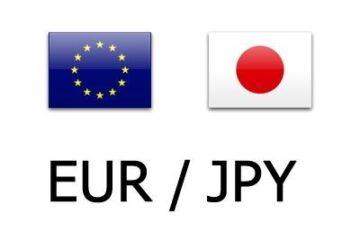Look at the stock market’s gains over the past six weeks, and you wouldn’t be blamed for thinking all is back to hunky dory.
After a nearly 20% drop from its February highs amid tariff turmoil, the S&P 500 has rebounded sharply, recovering most of its losses. Since April 9, the S&P 500 has gained 19%, and after its big move, it has risen by 1.4% year to date.
The gains are welcome, but stocks and the U.S. economy may not yet be out of the woods. The rally was built on optimism that trade deals would shrink tariffs’ bite, but deals take time, and even with negotiations, tariffs will likely still represent the biggest tax increase in decades.
We may see inflation rekindle itself, crimping spending, and uncertainty over policy may mean businesses retrench while awaiting clarity. It also doesn’t help that despite recent efforts to tame government spending, the U.S. deficit remains massive, and America’s debt obligations continue to climb.
The risks associated with our deficit aren’t lost on market participants, including Moody’s, one of the nation’s top-three credit rating agencies, and billionaire Ray Dalio, the legendary founder of the hedge fund Bridgewater, which has $112 billion in assets under management.
On May 16, Moody’s cut its rating on U.S. debt from its highest level, citing concerns over our debt and spending. The move caught the eye of Dalio, who has pounded the table regarding debt in the past year.
Ray Dalio, founder and CIO mentor at Bridgewater Associates, recently offered a stark take on the U.S. economy.
Image source: Dia Dipasupil/Getty Images
U.S. economic armor has cracks forming
The U.S. economy contracted 0.3% in the first quarter, a sharp decline from the 2.3% GDP growth in the fourth quarter and 3% and 3.1% in the second and third quarters, respectively.
The decline has raised concerns that once the negative impact of tariffs on spending flows into the economy, we could experience stagflation or recession this year.
Related: Secretary Bessent sends message on Walmart price increases due to tariffs
The worries aren’t without merit, given that the U.S. economy isn’t as healthy this year as in 2024.
Inflation has retreated, but progress has slowed, and household budgets are still under pressure from price spikes in 2022 and 2023. The Consumer Price Index inflation was 2.3% in April 2025, only slightly better than the 2.4% recorded last September.
Moreover, inflation could reemerge after newly instituted tariffs, including 25% tariffs on Canada, Mexico, and autos, a 10% baseline tariff, and, after a recent rollback, a still onerous 30% tariff on China.
The risk of inflation has put Fed Chairman Jerome Powell in a tight spot, particularly since the job market has worsened.
The Fed’s mandate is low unemployment and inflation, and those goals often contradict each other. Raising rates lower inflation but causes job losses. Cutting rates increases hiring but drives inflation higher.
In April, the U.S. unemployment rate was 4.2%, up from 3.4% in 2023. According to Challenger, Gray, & Christmas, employers have laid off 602,493 workers in 2025, up 87% from the same period in 2024. Further, the latest Jobs Openings and Labor Turnover Survey showed 7.2 million unfilled jobs in March, 901,000 fewer jobs than the year prior.
The prospect of slowing GDP, increasing unemployment, and rising inflation, or stagflation, may make it particularly tough for the Fed to cut interest rates this year.
Ray Dalio delivers worrisome words on the U.S. economy
Dalio has experienced his fair share of good and bad economies and markets since founding Bridgewater in 1975. He’s navigated the 1970s inflation spike, the savings-and-loan crisis in the 1990s, the internet bust in the early 2000s, the Great Recession in 2008, and the Covid tumble in 2000.
What he sees now worries him considerably.
Related: Jim Cramer sends blunt message on US debt risk to stocks
Dalio says the mountain of debt and appetite for spending are the most critical issues facing America today. If the U.S. fails to address them, a debt crisis will loom.
“If you don’t do it, you’re going to be in trouble,” Dalio said on Bloomberg’s Odd Lots podcast earlier this year. “I can’t tell you exactly when it’ll come; it’s like the heart attack….You’re getting closer. My guess would be three years, give or take a year, something like that.”
One big problem is that it gets harder to find willing debt buyers as outstanding debt grows, something made more challenging amid a trade war that could make foreign buyers hesitant to finance America’s budget.
Moody’s U.S. debt downgrade certainly doesn’t help matters.
More Experts
Treasury Secretary delivers optimistic message on trade war progressShark Tank’s O’Leary sends strong message on economyBuffett’s Berkshire has crucial advice for first-time homebuyers
If Treasury bond buyers slow their activity, interest rates will rise, further taxing the economy.
Worse, as inconceivable as it may seem, Dalio suggests that the U.S. government could consider restructuring its debt if it gets bad enough.
“At the current rate, the U.S. will be 50 trillion dollars in debt by 2035,” wrote Dalio on X on May 20. “Re the U.S. debt downgrade, you should know that credit ratings understate credit risks because they only rate the risk of the government not paying its debt.”
Dalio thinks that Moody’s downgrade only touches on the surface of the debt problem because the agency doesn’t consider the impact of inflation that could be caused by having to print increasingly more money to cover America’s obligations.
“They don’t include the greater risk that the countries in debt will print money to pay their debts, thus causing holders of the bonds to suffer losses from the decreased value of the money they’re getting (rather than from the decreased quantity of money they’re getting),” wrote Dalio. “Said differently, for those who care about the value of their money, the risks for U.S. government debt are greater than the rating agencies are conveying.”
Related: Veteran fund manager unveils eye-popping S&P 500 forecast


